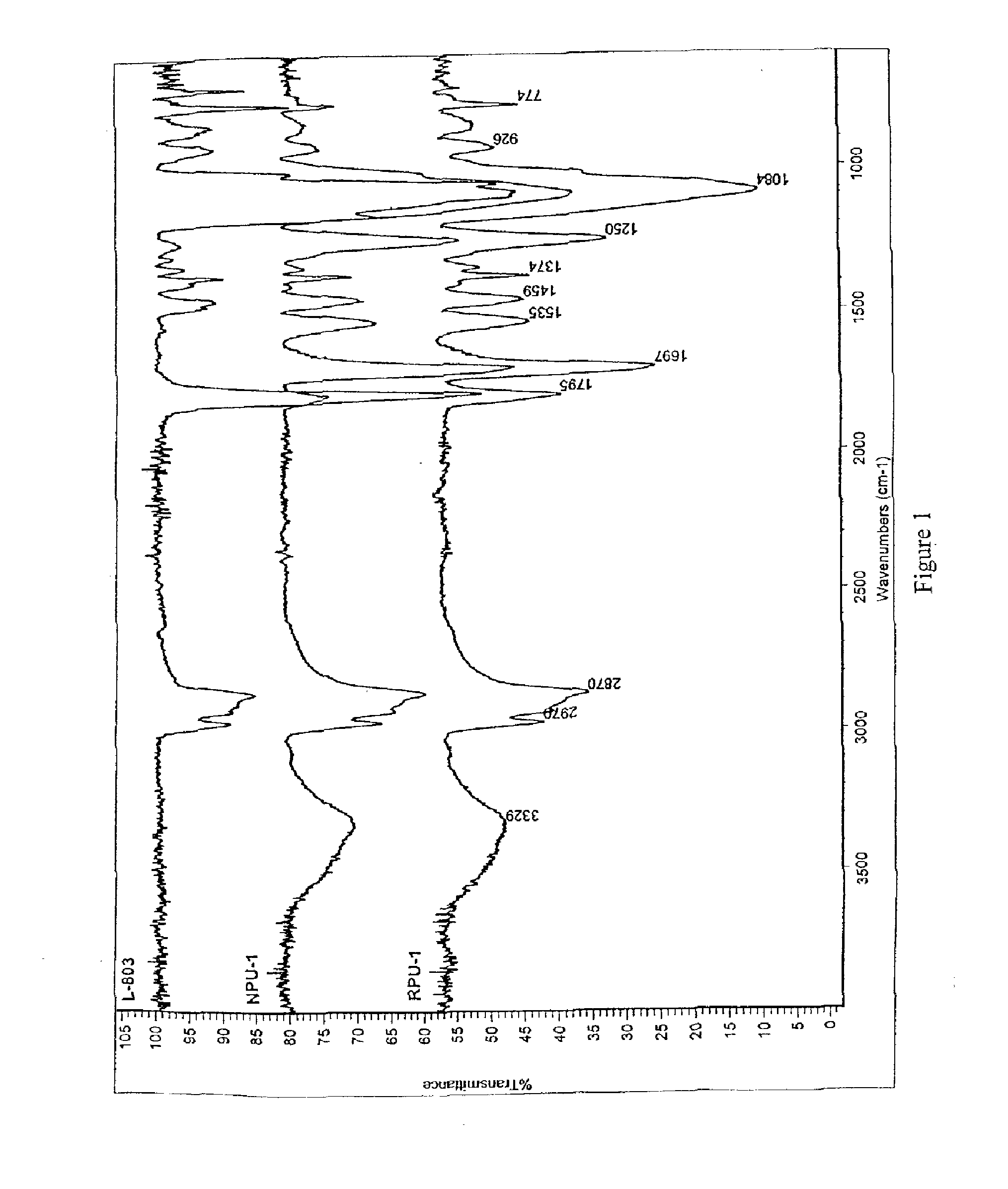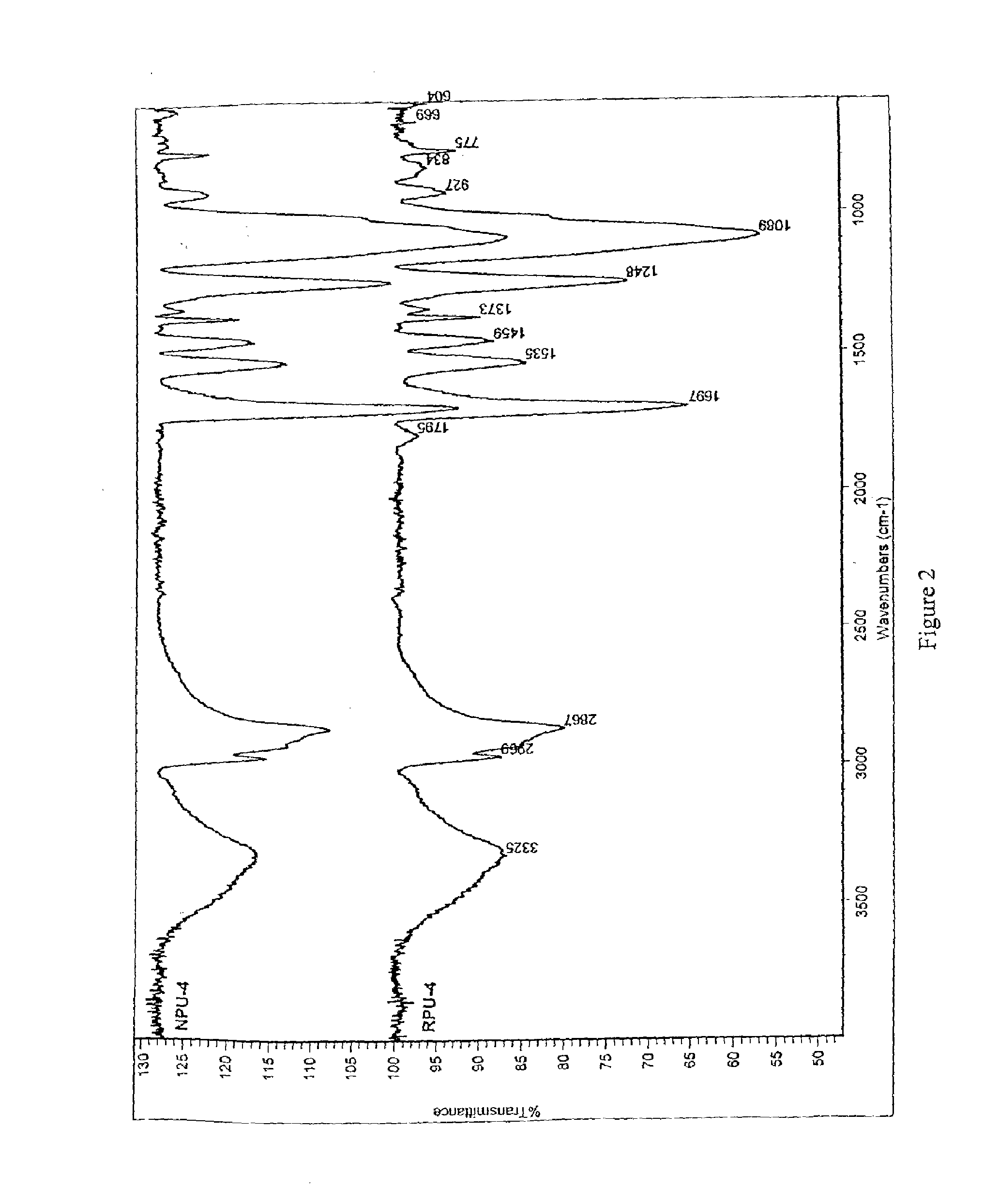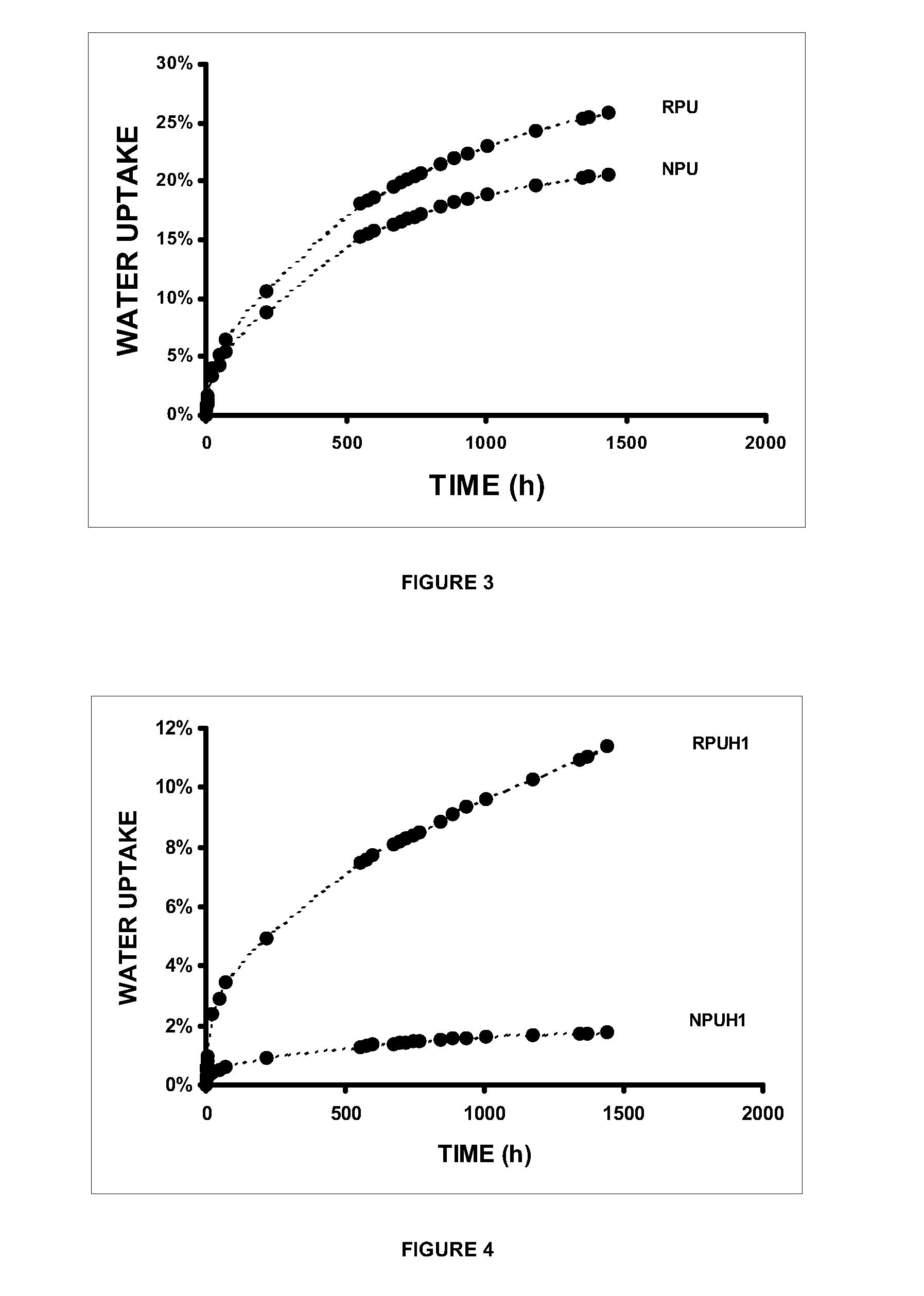Non-Isocyanate-Based Polyurethane and Hybrid Polyurethane-Epoxy Nanocomposite Polymer Compositions
a polyurethane and polymer composition technology, applied in the field of polyurethane and polyurethane/epoxy compositions, can solve the problems of high toxicity of isocyanates, inability to meet the requirements of environmental protection, etc., to achieve superior physical and mechanical properties, improve adhesive properties, and improve the effect of physicochemical and mechanical properties
- Summary
- Abstract
- Description
- Claims
- Application Information
AI Technical Summary
Benefits of technology
Problems solved by technology
Method used
Image
Examples
example 1
Preparation of a mixture of a cyclocarbonate resin with an epoxy resin
[0070]80 g of MY-0510 and 20 g of MY-0500CC were placed in a round bottom flask equipped with a mechanical stirrer, heating mantle and a digital temperature controller (acc. ±1° C.). The mixture was heated at 60° C. for 3 h under high shear (3000-3500 rpm). The solution was then removed from the flask and kept in a glass container. The solution was assigned the name: MY-20CC-80EP
examples 2-7
Preparation of dispersions of nano-clays into various polymers
[0071]Solventless dispersions of Cloisite 25A (Southern Clays) and Nanofil32 Chemie), into various resins or polymerizable monomers were carried out via the following general procedure:
[0072]100 parts by weight of a resin or a resin mixture, as set out in see Table 2, was mixed with one of the aforementioned nano-clays (10 parts by weight) and placed in a round bottom flask equipped with a mechanical stirrer, heating mantle and a digital temperature controller (acc. ±1° C.). The mixture was heated at a temperature between 50 to 60° C. for 6 h under high shear (3-3500 rpm). The dispersed product was then removed from the flask and placed in a plastic container. Table 2, summarises the preparation of each of the dispersions (resin, nano-clay, temperature) and the product names assigned to them.
TABLE 2Resin orMixtureTemperatureProductExampleof ResinsNano-clay(° C.)name2L-803Cloisite 25A60D44083L-803Nanofil 3260D38084MY-20CC-...
examples 8-15
Preparation of Mixtures of Nano-Clays into Various Polymers
[0073]Solventless dispersions of Cloisite 25A, Cloisite Na (Southern Clays), Nanofil32 Chemie), and Montmorillonite K10 in MY-0510 epoxy resin or MY-20CC-80EP were formed via the following general procedure:
[0074]100 parts by weight of MY-0510 resin or the resin mixture MY-20CC-80EP was hand-mixed for 5-10 min with a nano-clay (10 parts by weight) at ambient temperature, as detailed in Table 3.
TABLE 3Resin orMixtureTemperatureProductExampleof ResinsNano-clay(° C.)name8MY-0510Cloisite 25A25MEPOXY25A9MY-0510Cloisite Na25MEPOXYNa10MY-0510Nanofil 3225MEPOXY3211MY-0510Montmo-25MEPOXYK10rillonite K1012MY-20CC-Cloisite 25A25MEPPU25A80EP13MY-20CC-Cloisite Na25MEPPUNa80EP14MY-20CC-Nanofil 3225MEPPU3280EP15MY-20CC-Montmo-25MEPPUK1080EPrillonite K10
Examples for Non-Isocyanate-Based Polyurethanes and Polyurethane / Epoxy Hybrid Nanocomposite Formulations
PUM
| Property | Measurement | Unit |
|---|---|---|
| aspect ratios | aaaaa | aaaaa |
| aspect ratios | aaaaa | aaaaa |
| size | aaaaa | aaaaa |
Abstract
Description
Claims
Application Information
 Login to View More
Login to View More - R&D
- Intellectual Property
- Life Sciences
- Materials
- Tech Scout
- Unparalleled Data Quality
- Higher Quality Content
- 60% Fewer Hallucinations
Browse by: Latest US Patents, China's latest patents, Technical Efficacy Thesaurus, Application Domain, Technology Topic, Popular Technical Reports.
© 2025 PatSnap. All rights reserved.Legal|Privacy policy|Modern Slavery Act Transparency Statement|Sitemap|About US| Contact US: help@patsnap.com



